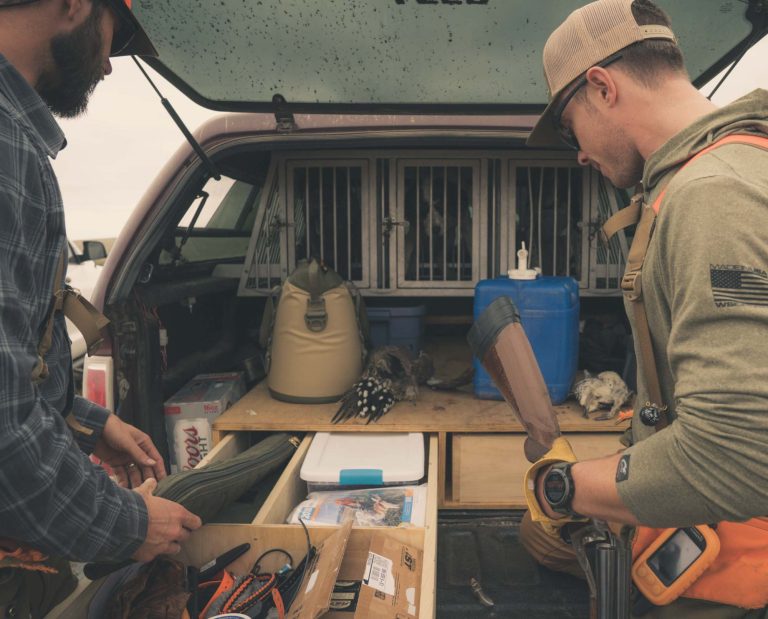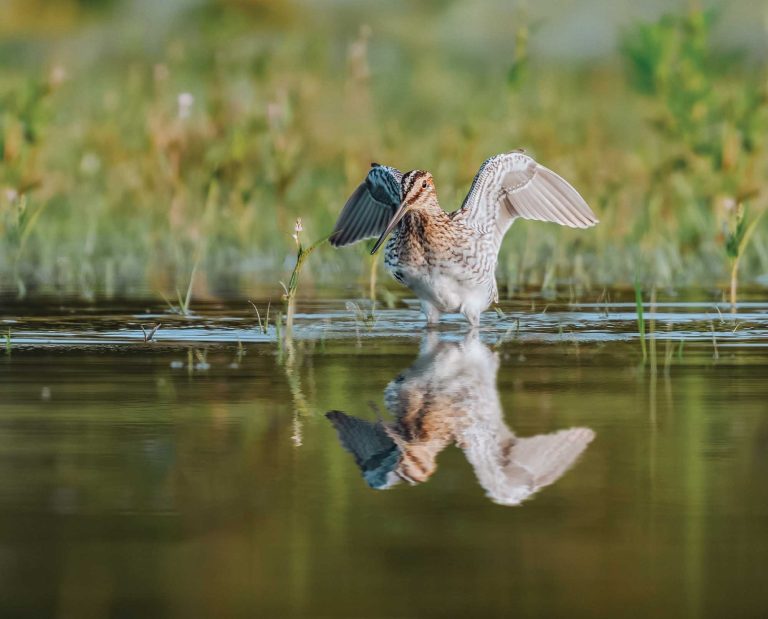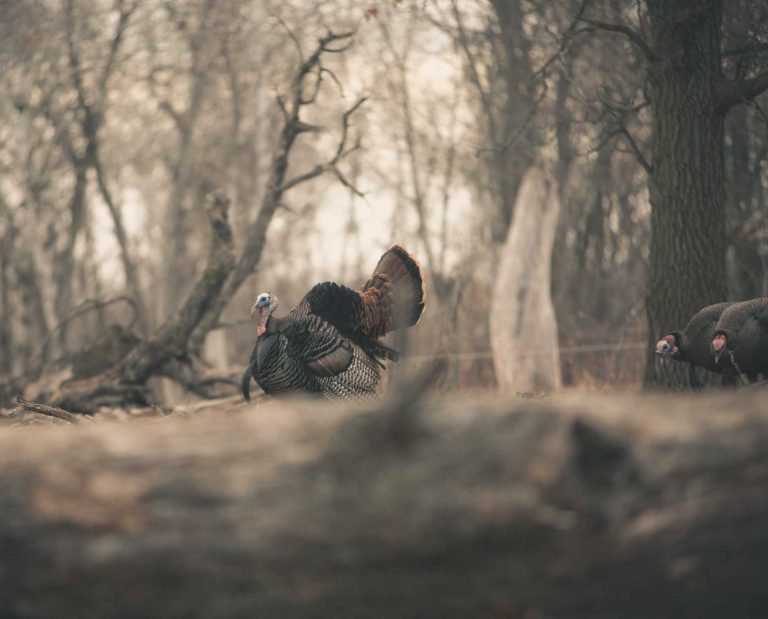Duck Blinds on a Budget

Try these tips for a natural duck blind without spending money on an expensive blind setup
Your pursuit of ducks this season doesn’t have to break the bank. While duck hunting does require a few unique investments such as a good pair of waders, non-toxic shot, and migratory bird stamps, investing in an expensive, prefabricated duck blind isn’t required. With a little creativity, some sweat equity, and a few simple materials, concealing yourself from the wary eyes of working ducks is definitely possible.
Deciding where to build your duck blind
The location of your duck blind is just as critical as the construction of the blind itself. There are a variety of factors to consider when it comes to your duck blind location. Let’s take a look at some of the most important considerations.
- Prevailing wind: Wind direction is a critical component when it comes to hunting ducks. Ideally, the wind will be directly at your back, providing the ducks a headwind in which to land. If the terrain doesn’t allow you to set up with the wind at your back, a crosswind is the next best thing.
- The sun and shadows: A rising sun in the morning and the setting sun on evening hunts are critical factors when it comes to deciding where to put your duck blind. Staring into the sun during the magic hours of sunrise and sunset is no way to spend your hunt, blinded by the low-lying winter sun. Try to keep the area you are hoping to finish birds out of the direct line of the sun. Looking into the sun makes it hard to correctly identify the birds and to effectively aim your shotgun.
Setting up where natural shadows will add depth and another layer of breakup to your blind can be an amazing camouflage technique. By using the sunlight and shadows to your advantage, your blind will be far less noticeable. If you are putting a blind together in the early morning darkness, consider what nearby terrain and foliage will cast a shadow once shooting light arrives, and use those shadows to your advantage.
- Elevation and vertical terrain: Cut banks, tall cattails, and other vertical changes in terrain can work well to help you hide during your duck hunt. Look for natural vertical changes in vegetation, groupings of willow trees, flooded reeds, etc. Breaking up the vertical profile of your duck blind is a key element of a successful hunt.
Tucking your hide along the tailing end of a vertical row of tall reeds or grasses or up tight on the bottom side of an undercut bank is a fantastic way to blend in and go unnoticed.
- Water depth: It can be disheartening to find the perfect location for a blind with all the key factors in place, only to realize the water depth is much too deep to safely hunt. Before you get busy putting together a duck hide in a new area, carefully check the depth of the water. Consider your ability to safely wade the water you plan to hunt, the length of your decoy anchor lines, and your ability to retrieve downed birds with or without a dog.
- Finding the X: Ducks want what the ducks want, and trying to make them do things they aren’t naturally doing very rarely goes according to plan. Put in the time to scout birds, figure out exactly where they are landing if you can, and hunt that spot. Whenever possible, set up on the “X.”
X marks the spot where the birds want to be. When you find birds using a pool in a marsh, don’t just set up on that pool; try to set up on the exact spot in the pool, on the river, on the lake, or on a pond that the birds want to be.
Like a painter’s palette or a baker’s recipe, when all the ingredients come together for the right duck blind, it’s like magic. It doesn’t always come together like the dream hunts we all strive for, but sometimes it does!
Duck hunters live in the real world, too. Very rarely do we stir together all the perfect ingredients in all the right proportions and find the perfect setup. When the wind is wrong, you adjust the decoys and take a passing shot. When the sun is blinding, you pass on a shot because you can’t identify the bird. We adapt, play the cards we’re dealt, and we enjoy the hunt, the birds, and our time out there.
Using natural materials for your duck blind
So here it is, and there you are. It’s duck season and you’ve found some ducks to hunt. You don’t have to break the bank when it comes to putting together a hide to successfully take ducks this season. With a little ingenuity, a few tools, and a variety of suitable materials, you can put together a duck blind that will have ducks’ feet down in your decoys without a clue that you are there.
Putting together an effective duck blind that blends into your hunting area and hides you from passing birds can be accomplished with a wide variety of materials. Consider some of these natural material options that may be available where you are hunting.
- Tree branches: Tree limbs can be an effective way to construct a makeshift blind frame at your hunting location. Look for a variety of tree limb types including larger limbs or branches (the circumference of your wrist or larger), medium sized branches (in between the circumference of your thumb and your wrist), and small branches (smaller in circumference than your thumb).
Using larger branches, build a frame for your blind that can be brushed or grassed in. Driftwood along a lake shore or on a river bank works well for building a blind frame.
Medium sized branches, limbs, or sticks work well to build a sort of grid, crisscrossing the space between the larger branches and the ground.
Fill in the blind’s frame with brushy items like reeds, cattails, grass, willow branches, or cedar boughs.
- Duck blind grass: Grassy edges and banks are common along duck marshes, waterways, ponds, lakes, and riversides. Blending in your hide with shaggy clumps of natural grass is a great way to go even with layout blinds.
Piles of bunched grass can be added in and around your wood frame to give it depth and a critical layer of concealment. Look for shaggy clumps of grass, tall reed-type grasses, and cattails. *Avoid cutting and transporting noxious weeds like Johnson grass during your hunts.*
Putting together a makeshift blind on the spot can be tricky. By adding a few simple tools, or even packing in a select few blind building materials, you can make a huge difference in your duck blind game in a hurry.
Tools for building a natural duck blind
Building any project is considerably easier and quicker with the right tools. The same goes for putting together a duck blind. A few simple tools in your blind bag or thrown into a bucket can go a long way toward building a terrific duck blind.
- Pliers and wire: Fastening, wrapping, tightening, and tying can all be done with a pair of pliers and a little steel wire. Choose pliers with sharp wire cutters on the back of the jaws. High-visibility grips sure won’t hurt anything when you lay them down and can’t find them again.
Steel baling or annealed wire from the hardware store is just the ticket for wiring together your blind’s frame, bunches of grass, or bunched cattails. Be sure your wire is dull in color, soft enough to bend, and light enough to cut.
- Nylon tie wraps: To be honest, I’m not entirely sure how mankind existed through the millennia without nylon tie wraps. They are lightweight, strong, easy to use, and handier than a pocket on a shirt.
Look for plain black, gray, brown, or other natural colors. Tie wraps can hold everything and anything together when you’re building your blind. Similar to wire, nylon ties work to hold things together and hold things in place.
- Handheld pruners and a folding saw: You might be able to get by with breaking limbs and struggling to scrounge the right length material for your blind, but the right tools can make all the difference in the world.
Add a small pair of hand held garden pruners to your blind bag for anything from clipping brush for your blind,to trimming shooting lanes and even clipping wings and feet when you’re cleaning ducks.
A small, folding saw is the perfect companion to your handheld pruners. Use it to saw tree limbs to length and cut down saplings for amazing blind construction material, provided of course that you have permission from the landowner to do so.

Using wire panels for your duck blind
The original panel blind in waterfowling is the welded fencing panel. Found at any local farm and ranch supply store or grain elevator that sells fencing supplies, a hog or cattle panel is just the ticket for a variety of duck blind designs and uses.
Brand new panels can be bright and shiny in the sun; a quick hit with flat grey or brown primer in a spray can or even a spray with salt water to create surface rust will quickly fix that problem.
Using a pair of bolt cutters or heavy lineman’s pliers, cut your panel to length and height for the size and style of blind that you plan to build. A single 16-foot panel can easily build a fantastic blind large enough for three or four hunters.
Grass that panel in. Before your hunt, use large clumps of long grass to weave in and out of the livestock panel. Once you have the shine off and the panel grassed, it’s time to hunt. You can situate one panel in front and one behind for an A-frame blind, or use a single panel in front when willows or tall cattails provide cover from behind and overhead.
Other materials that can be useful when you’re using wire panels include:
- Steel posts
- Chicken wire
- Camo netting, burlap, or a tarp
Duck blinds are a magical place, full of tradition, nostalgia, and the stories we will someday tell. Don’t let the investment in a ready-made blind turn you away from hunting ducks this season. With a little imagination and a few tools, you can put together a blind on a budget that will have you watching ducks cup up and commit!








